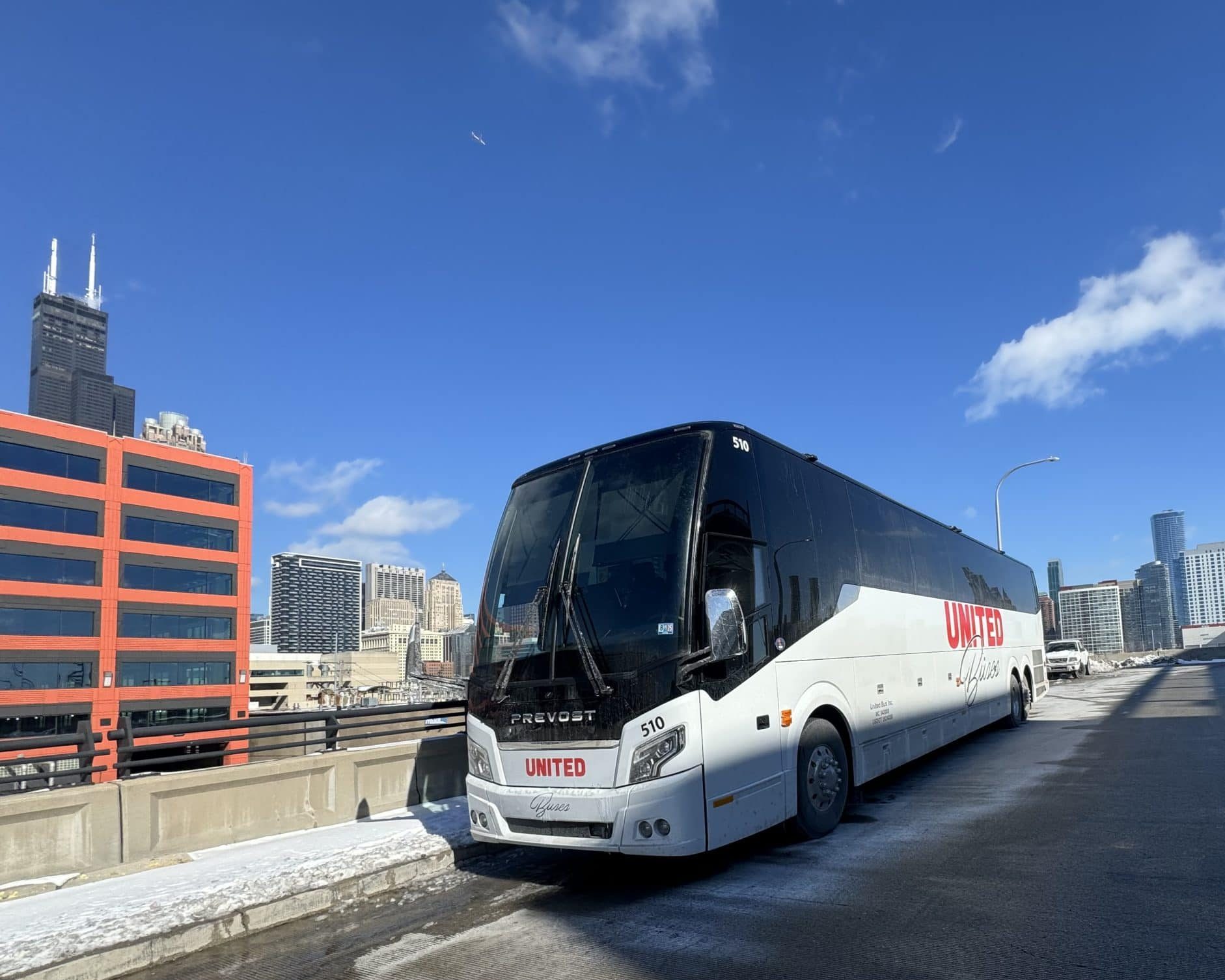The Charter Bus Guide
When you’re responsible for moving employees to a retreat, athletes to an away game, or relatives to a wedding, the logistics can get messy. A charter bus keeps the group together, the luggage in one place, and the schedule on track—all under the care of a professional driver. Compared with carpools, rideshares, or short-haul flights, it’s often the simplest and most budget-friendly way to cover distance as a team.
What you’ll need before you ask for a quote
Start with the basics:
Date and time – include every pickup and drop-off so your planner can map the duty hours accurately.
Addresses – exact street addresses (and loading dock instructions if a venue has them) prevent day-of surprises.
Headcount – even a ballpark number helps pick the right coach size; firm it up later to avoid paying for empty seats.
If the trip involves multiple stops, overnight layovers, or special equipment—wheelchair lift, Wi-Fi, power outlets—mention that now. Clear details up front almost always translate to a sharper price and a smoother travel day.
How pricing really works
Charter rates aren’t pulled from thin air; they rest on a handful of predictable factors:
Total time and mileage – Longer routes or itineraries that keep the driver out late cost more.
Season and demand – Spring weekends and summer tour season sell out quickly; early booking means better availability and, sometimes, lower rates.
Driver regulations – Federal law caps a driver at 10 hours behind the wheel (15 hours on duty) in a 24-hour period. Extra miles after that require a relief driver.
Vehicle size – A 55-passenger motor coach costs more per day than a 25-seat mini bus, but the price per passenger may drop once you factor in capacity.
Overnight travel – Multi-day trips include the driver’s hotel room, usually arranged by the client.
Picking the right coach
Most fleets offer several options; here’s a quick reference:
Mini bus (24–28 seats) – Good for local shuttles, wedding parties, and conference transfers. Easy to park on tight city streets.
Mini coach (34–38 seats) – Extra luggage bays and a bit more elbow room, ideal for day trips and regional tours.
Full-size motor coach (49–55 seats) – Restroom on board, under-floor luggage, high-back reclining seats—made for long hauls and large groups.
If you’re unsure, describe the people and the gear you’re bringing. A seasoned dispatcher can match you with the right vehicle in minutes.
Five cost-saving tips from the dispatch desk
Travel mid-week when you can. Tuesdays and Wednesdays often carry lower demand.
Combine services. Need airport pickups and a daily shuttle? Booking everything in one contract can unlock a better day rate.
Plan loading zones early.
Confirm the itinerary before the trip.
Book early for peak season. Holding a coach six months out costs nothing and keeps you ahead of competing events.

